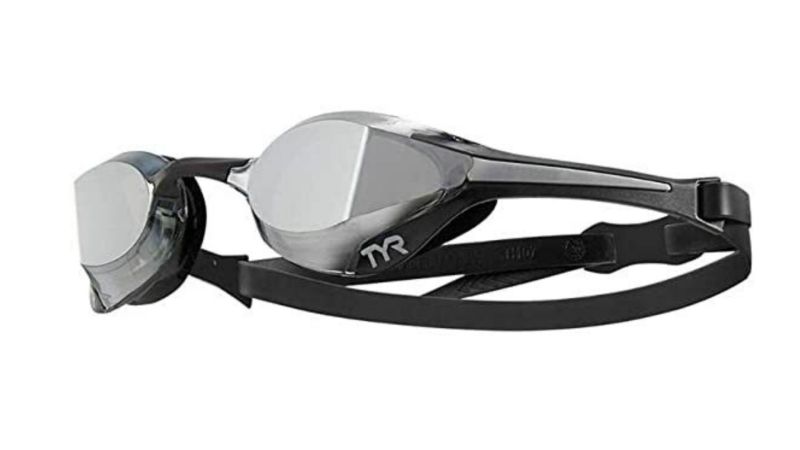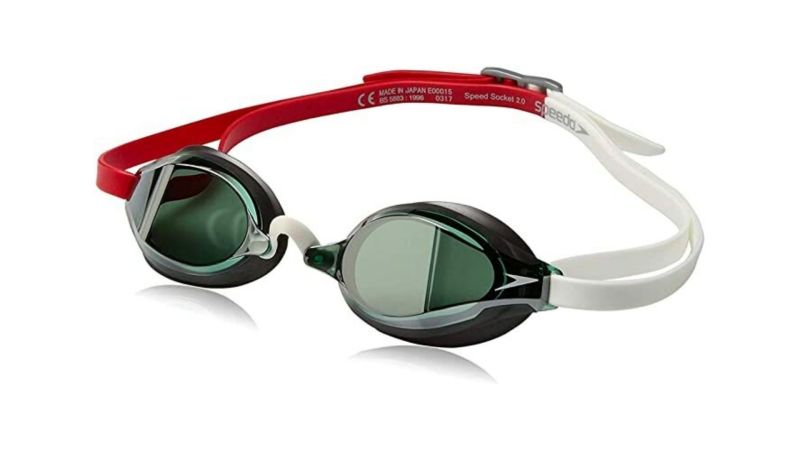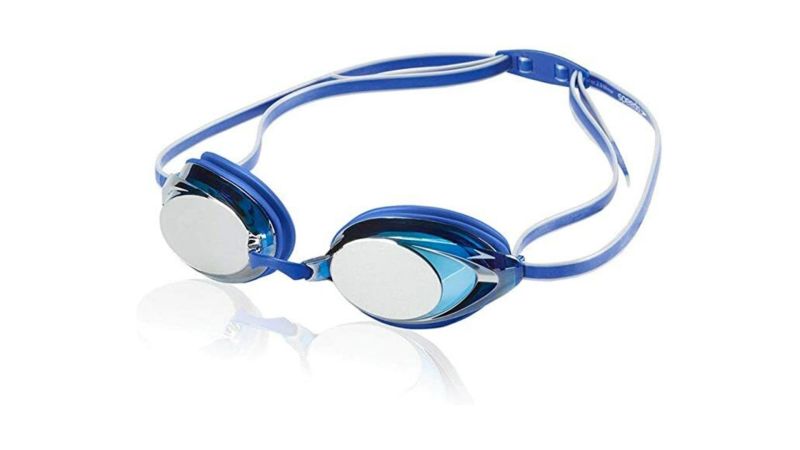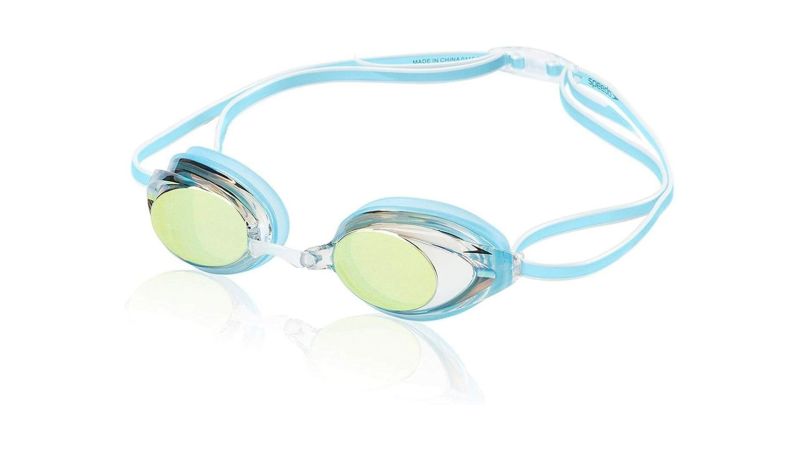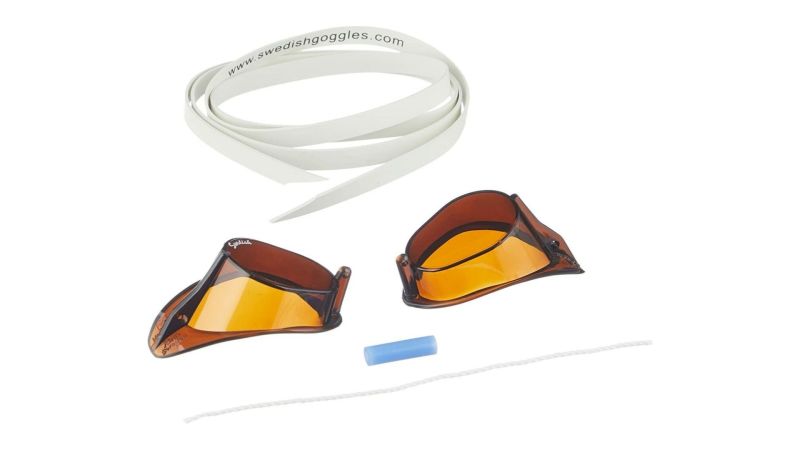We may earn revenue from the products available on this page and participate in affiliate programs.

When you shop for swimming goggles, you basically want to find a pair that fit comfortably, keeps a water-tight seal around your eyes, and gives you the ability to see underwater. In other words, the things that they’re inherently meant to do. But there are also more than a thousand options at any given time, so how do you find what’s right for you?
For this review, we compiled a list of the best swimming goggles based on practical testing, personal experience, and expert opinion from competitive swimmers, all the way up to the collegiate level. So, read on to find out the best swimming goggles.
Best Competition
TYR Tracer-X Elite Racing Goggles
Best Value
Speedo Speed Socket 2.0
Editor’s Choice
Speedo Vanquisher 2.0
Best Women’s Swimming Goggles
Speedo Women's Vanquisher 2.0
Best Swedish Swimming Goggles
Malmsten AB Original Swedish Goggles
Why you should trust us
For this article, I interviewed competitive swimmers and swimming instructors. While I did swim competitively in high school, my ability was nothing compared to the nationally-ranked athletes I interviewed. Nonetheless, combining the experiences gave me greater insight into what to look for when buying a new pair of swimming goggles.
Types of swimming goggles
Swimming goggles generally come in three major configurations: traditional, Swedish, and dive mask. However, I only covered the first two because the last option is a complex category on their own and merit a separate article.
Traditional
Traditional swimming goggles are the category that every one of our picks fits into, simply because they’re the style of goggles that most people are familiar with. They consist of two separate eyepieces with rubber gaskets that create a water seal that prevents water from entering. They secure around your head using rubber straps and they have a removable nose piece. You can also get traditional swimming goggles with prescription lenses.
Swedish
Swedish-style goggles are gloriously simple but an acquired taste. They consist of plastic lenses with no gaskets, they’re held together by string, and come from the factory unassembled. While they may sound odd compared to traditional goggles (and you have to assemble them yourself), they are extremely low profile and totally customizable.
Dive mask
Dive masks include a range of goggles like snorkeling and SCUBA masks. They’re much larger than swimming goggles, but offer an increased field of view; a rubber nose covering, which force you to breathe through your mouth; and large flat lenses instead of eye cups. You generally wouldn’t wear them for recreational or competitive swimming.
Key features of swimming goggles
Eye cups
The eye cups are the primary component of swimming goggles and when you’re looking at them, you’re really looking at two things: socket size and lens size. The former is a reference to actual size and comfort, while the latter determines optical clarity.
Swimming goggles with a small socket size tend to be more streamlined as they fit right over your eye socket. For the increased performance, though, you give up some comfort and field of view. Large socket goggles, on the other hand, are more comfortable and offer a wider field of view, but at the expense of performance.
Field of view
Field-of-view refers to how much you can see in front of you. Your standard unobstructed view is 120 degrees, but when you’re looking through swim goggles (or through a camera or scope), your field-of-view narrows. When it comes to swimming goggles, an increased field of view often comes at the expense of hydrodynamics.
Strap
The strap is how you secure the goggles around your head. On traditional swimming goggles, they’re made out of rubber, or similar material, and more often than not there’s a split in it. One part is meant to go high and the other low on the back of your head for increased security and stability. There are also aftermarket options like bungees.
Lens coating
Lens coatings are largely a matter of personal preference, but they do come in handy if you swim outside or in an indoor pool with glaring lights. The most common include:
- Colored tint
- Mirroring
- UV protection
- Anti-fog
Whatever coating you choose, or combinations of coatings, they can wear out over time, especially with repeated submersion in salt- or chlorine-treated water. Something like anti-fog treatments typically only last a few months before you have to apply more.
Benefits of swimming goggles
Underwater visibility
Water, especially against the naked eye, obscures your vision, but you can exponentially increase clarity by adding a layer of air and a transparent lens. By essentially giving your eyes a screen to focus on, swim goggles allow you to see as far as the water will let you.
Focus
A good pair of goggles will help you focus on swimming and turning instead of water getting into your eyes. Pool water is usually treated with chlorine, which is a mild irritant, and having mild irritants in your eyes is unpleasant, especially after long periods of exposure. While there’s no evidence suggesting that it causes permanent damage, it can cause short-term issues like dehydration and in worst cases, lead to infections (in dirty pools).
Pricing considerations for swimming goggles
Budget
For less than $15, you’ll find economically priced swim goggles that are ideal for beginners and growing children, but they tend to be featureless and use lesser-grade materials, which might scratch or wear out. More often than not, you might buy them for one-off use or for kids, who tend to beat up their gear.
Mid-range
The vast majority of goggles, even competition-grade, cost between $15 and $30. They tend to fit better, have more features, and use more durable materials than low-end goggles. They’re good for recreational use and for workouts.
Premium
Goggles above $30 tend to be of higher quality and are meant for competitive swimmers or triathletes. They’ll endure daily use and/or they’ll be equipped with very high-end features like optical tech and heads-up displays for tracking workouts.
How we chose our top picks
When selecting the top picks for this article, I reached out to swimmer friends that I knew could be honest with me and give me what works for them. In some cases, they spoke against the brand that sponsored their team, instead preferring another brand, or pointing out lesser-known deficiencies of popular brands. I’d like to personally thank Theo and Shannon for their assistance with this article, since my own experience is somewhat out of date, and was never that diverse to begin with.
FAQs on swimming goggles
You’ve got questions, Task & Purpose has answers.
Q. How do you keep swimming goggles from fogging?
A: Swimming goggles, safety glasses, and any other form of eye protection that doesn’t allow for airflow will be susceptible to fog. Some goggles will feature a proprietary anti-fog coating, but I have never found these to be very effective. Instead, using a good anti-fog compound such as Cat Crap has worked for me in the past.
Q. How do you clean swimming goggles?
A: After every use, you should rinse your goggles in fresh water, which will prevent the chlorine from degrading the coating on your goggles, making the rubber brittle, and leaving residue on your goggle. Doing this will prolong the lifespan of your goggles.
Q. Can I wear swimming goggles after LASIK?
A: Once fully healed from LASIK, there should be no issue with swimming with goggles. However, consult your optometrist with this question, as we don’t have any doctors on staff that I know of.
Q. How do you remove scratches from swim goggles?
A: Depending on the severity of the scratches, and whether or not you have a mirrored coating on your goggles, you may be able to use a compound like Polywatch to buff out some scratches. However, this may not make the goggles as clear as they were before.
Q. How do you adjust swimming goggles?
A: Your goggles should be snug, but not overly tight, and should stay on even when diving into the water, pushing off of the wall of the pool, or in heavy surf when in open water. For competitive swimmers, wearing your goggles underneath a swim cap may help with maintaining fit, and other swimmers may find it helpful to change out the nosepiece of their goggles.
Q. Can I wear contacts with swimming goggles?
A: You can, however, many swimmers who require corrective lenses instead prefer to wear prescription swim goggles to avoid the possibility of chlorine infiltration under their contacts, which could cause far worse irritation than against the naked eye.
Q. How do you assemble swimming goggles?
A: This mostly applies to Swedish swimming goggles, since most swimming goggles require little to no set up. Swedish goggles need to be adjusted for your eye width by lengthening or shortening the string that connects the goggles over the bridge of your nose, and then the rubber straps need to be adjusted. To properly size the straps, whether you use rubber straps or bungees, you’ll run the straps through the goggles once on each side, giving you an open end and a closed end. Tie off the open end or use a bungee gather, if using bungees, and adjust the tightness until the goggles feel secure on your head. Try the fit of the goggles underwater, and continue to adjust the length of the nose string and rubber straps until you achieve a secure fit, even in the most vigorous water conditions.
Our gear section
Matt Sampson is a Task & Purpose commerce writer. An 0861 in the Marine Forces Reserve and a Virginia native, he worked in tactical gear retail in his past life and is an avid firearms enthusiast. The farthest the Marine Corps has sent him from home is California.
